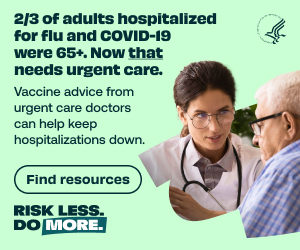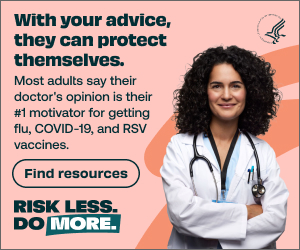In room 7 there is an 85-year-old puffing away on CPAP who was just discharged from the hospital two days ago and is back for worsening congestive heart failure (CHF). In room 8 there is an agitated advanced Alzheimer’s patient whose J-tube fell out at the nursing home. And in room 9 there is a cirrhotic, COPD hypotensive dialysis patient with pneumonia and a room air sat of 85%.

Five reasons why the emergency department needs to become the hub of care for palliative medicine
In room 7 there is an 85-year-old puffing away on CPAP who was just discharged from the hospital two days ago and is back for worsening congestive heart failure (CHF). In room 8 there is an agitated advanced Alzheimer’s patient whose J-tube fell out at the nursing home. And in room 9 there is a cirrhotic, COPD hypotensive dialysis patient with pneumonia and a room air sat of 85%. What’s the common thread? They are all dealing with medical issues surrounding end of life care. Unfortunately, through the combination of politics, fractured care, overworked and possibly overly optimistic primary care providers and specialists, end of life care has become an official emergency medicine issue and most of us still have a lot to learn.
Our specialty’s hard fought reputation is based on our ability to “act”. We are experts at quickly identifying the unique needs of an individual patient and rapidly implementing a plan that meets those needs. We own that golden hour of trauma and rush our patients to the cath lab or the scanner with the intention of maximizing their chances for a good outcome. Ironically, this “do something right now” attitude may also be a weakness when it comes to end of life care. We are vulnerable to getting swept away by the immediacy of a situation and in doing so may occasionally forget to consider the goals of a patient and their family in a broader context. For example, even under the best of circumstances, that hypoxic patient with cirrhosis and renal failure will still have at least two failing organs regardless of whether or not we intubate them and start pressors. It is no secret that given a dire situation most of us would not choose overly aggressive end of life care for our loved ones or ourselves. Yet, we routinely offer it as the default to our patients and their families even though it is highly unlikely either can truly understand the medical context or the real consequences of their decisions (see side bar).
As a huge portion of our patient population is aging, it’s time to make end of life care a bigger priority on the EM landscape; it is simply the right thing to do for our patients. Yes, I sense that you are skeptical, but another great EP trait is our adaptability – think how foreign that ultrasound or Glidescope was when you first laid eyes on it but how indispensable it is to you now. A well-crafted EM/palliative care partnership holds the same potential to improve patient care. But for it to be successful we will have to have an open mindset and commit to learning some new tools. In Part 1 of this two part series we will discuss five facts about end of life care and in Part 2 we will concentrate on three potential EM benefits of a formal palliative care/EM collaboration.
Fact #1: Humans Don’t Die Like They Used To
Humans die differently than they did 100 years ago. The top three causes of death in 1900 were 1) Pneumonia and influenza 2) Tuberculosis 3) Diarrhea and enteritis (US Department of Health and Human Services). If you make a graph with time on your X axis and function on your Y, the shape of historic death charts look like a steep cliff – people were pretty active and then just died. Today those graphs look very different. Now in the vast majority of people (up to 90% of Medicare recipients) it resembles either a downward undulating wave of sickness / remission from chronic disease or a hill that rolls onto a seemingly endless beach due to frailty and dementia. (Lunney JAGS 2002).
Why is this important? Because we need to change the way we prognosticate. It is easy to recognize that a patient with metastatic CA is in the last stages of life and refer them appropriately, but what about that 85-year-old in room 7? The prognostic course of most patients with chronic illness is a little harder to pin down. It is analogous to running down a really steep cliff on a super narrow path where any misstep could lead to a simple scraped knee or imminent death. Traditionally there are a lot of reasons why physicians in general optimistically grab for the Band-Aids and migrate towards the scraped knee scenario. They might be minimally trained in end of life discussions and feel uncomfortable. They may believe they should wait until the patient cues them, or they may be wary that their predictions may be inaccurate. Or they may worry that such a discussion may overwhelm the patient, causing them to give up hope prematurely.
But the medical community’s reluctance to broach this topic may ultimately deprive a patient and their family from what Emanuel (J Pall Med 2007) describes as the three essential tasks of dying: logistical planning (finances and care for dependents), relational tasks (mending bridges, leaving a legacy) and personal reflection and acceptance. For example, statistically that patient with congestive heart failure in room 7 has a greater than 50% chance of dying within a year. Similarly, a demented patient with a broken hip or pneumonia has greater than a 50% six-month mortality. If this information is openly discussed, family holiday plans may take on a different light. As chronic illness has changed the metrics of death, practitioners will need to learn new skills and have access to available resources to better prognosticate. Although this is an ongoing area of research, there are several tools currently available (see Karnofsky’s score1 and palliative care prognostic score2 and fast facts on prognostication3).
As aptly quoted by Christakis in his book Death Fortold, “As a result of a failure to prognosticate, let alone prognosticate accurately, patients may die deaths they deplore in locations they despise.”
Fact #2: Palliative Care and Hospice Are Distinct
Palliative care and hospice are similar but distinct in important ways. Both are rooted in the philosophy that good patient care extends beyond a disease and its symptoms to encompass the spiritual and psychological well being of a patient and their family. By definition, however, hospice care is limited to patients with a life expectancy of less than 6 months. Palliative care, on the other hand, is defined much more broadly to encompass conditions that are life shortening but with no defined time frame. (I often emphasize this difference when introducing the concept of palliative care as it opens the door to an end of life discussion without causing the patient to hyper-focus on a specific prognostic time frame.) Patients with advanced COPD, AIDs, CHF, Alzheimer’s and stroke may all qualify for palliative care. Importantly, patients who are in palliative care can still receive disease-modifying treatments such as chemotherapy, radiation and surgery. As the spectrum of palliative care is more extensive, a good palliative care team can bridge a patient and their family from aggressive treatment to hospice, death and then ultimately family bereavement. This continuous presence is critical as patients often feel abandoned when their disease advances and trusted specialists announce they no longer need to follow them.
Fact #3: Patients Want Input
People want input into their end of life decisions. When you look at the palliative care literature people with life shortening illnesses want three major things: relief of pain, not to be a burden on their family and to have as much control over decision making as possible. Although seemingly obvious, patients are more likely to have end of life care consistent with their personal preferences when they have an actual discussion with their physician about it. (Mack J Clin Oncol 2010). Most Americans want to die at home, but looking at 2009 Medicare data only about 1/3 will. And according to a recent California Health Care Foundation study while 60% of people do not want their family to be burdened making end of life decisions for them, more than half had thus far not shared their end of life wishes with anyone. In addition, 80% of participants felt they would like to talk to their doctors about end of life care but only 7% had actually done so.
Fact #4: Patients In Palliative Care Programs Have Better Quality of Life
Temel’s (NEJM 2010) landmark study showed that besides having significantly less depression than their traditional treatment cohorts (38% versus 16%), palliative care patients actually outlived them by almost three months. Palliative care also improves the mental health of bereaving family members. Wright (JCO 2010) prospectively followed 342 advanced cancer patients and their families and found that if the patient died in the ICU the family had 8x as much PTSD after the death than if they died at home.
Fact #5: It’s Expensive to Die in America
These are the numbers: One percent of our GNP is spent on critical care, about 5% of Medicare patients are responsible for 30% of the Medicare budget – almost 80% of that bill is spent in the last 30 days of life. Like most things in medicine, end of life costs are also related to where you live.
According to the Dartmouth Atlas Project, Dubuque, Iowa is on the lower end with
average Medicare reimbursements of the last 2 years of life averaging about $35,500 while New York City’s was at the higher end with $89,500. Palliative care is extremely cost
effective. A 2011 Health Affairs Study noted a $6500 savings per hospital admission per patient in palliative care compared to traditional care and estimated that NY state could save $250 million annually by increasing palliative care services.
I sincerely believe that investing in palliative care is a better way to care for our patients. The reality, however, is that if we don’t champion it soon, a less altruistic and more bottom-line driven outside force will, because there is a whole lot of money at stake.
Jeannette Wolfe is an associate professor of emergency medicine at Tufts University School of Medicine
References
1: tools.farmacologiaclinica.info
3: www.caresearch.com.au/Caresearch
*************************
A picture is worth a thousand words
A recently released Pew Report on EOL care revealed that almost 1/3 of Americans believed that doctors should do everything they can to save a patient’s life regardless of whether or not the patient is in significant pain or has a terminal illness. The bigger question is whether individuals, without medical training or first hand experience of a hospital death, have an accurate medical context of EOL to be able to make a truly informed consent. The below two studies suggest that end of life (EOL) decisions are often radically changed once people are shown videos (versus simply read narratives) about what different EOL medical options actually look like.
1. Volandes et al Arch Inter Med 2007: Healthy adults were verbally described what it was like to have advanced Alzheimers and then asked what EOL option they would choose for themselves in that scenario. They were then shown a video of a patient with advanced Alzheimer’s and re-asked. Before the video 21% of patients wanted full code and 50% care and comfort, afterwards none wanted CPR and almost 90% wanted care and comfort only.
2. El-Jawahri et al J of Clin Oncology 2009: Randomized 50 patients with advanced malignant gliomas to either a verbal narrative that reviewed three EOL options (full code, basic care, care and comfort only) or to a verbal narrative followed by a realistic video illustrating these options. Outcomes: in verbal narrative 25% wanted to be full codes and 22% care and comfort. When the video was added, none wanted to be full codes and 91% wanted care and comfort only.
Palliative Care’s Choosing Wisely
The Top Five Unnecessary Procedures
The American Board of Internal Medicine Foundations’ Choosing Wisely Campaign has asked each specialty to identify their top five harmful or inappropriately utilized resources. This is the American Academy of Hospice and Palliative Medicine’s List.
- Avoid percutaneous feeding tubes in demented patients
- Don’t delay appropriate palliative care referrals because patients are still receiving aggressive disease-directed treatment.
- Don’t keep AICD turned on when device shock is not aligned with goals of care
- For painful bony mets, don’t use more than a single fraction of palliative radiation
- Avoid topic haloperidol, lorazepam and diphenhydramine gels for nausea
*************************









